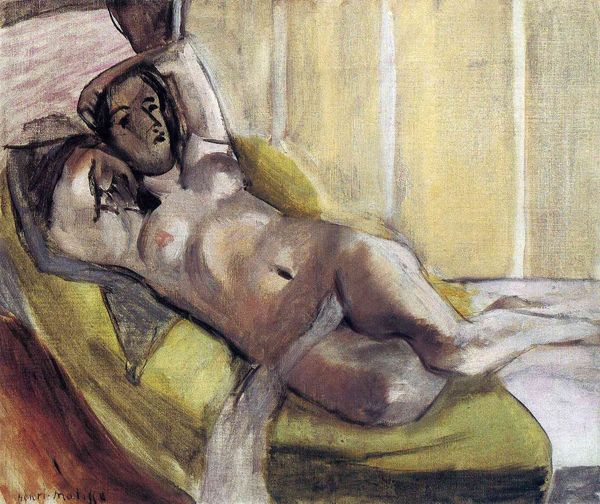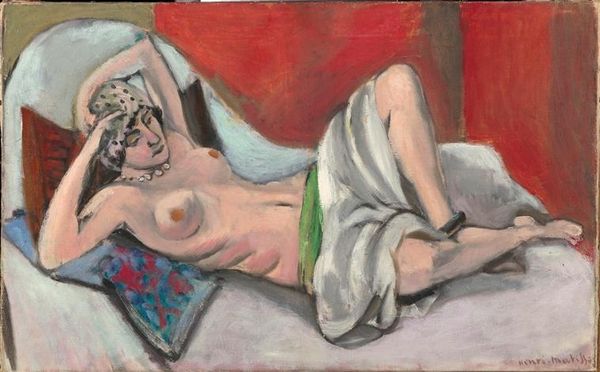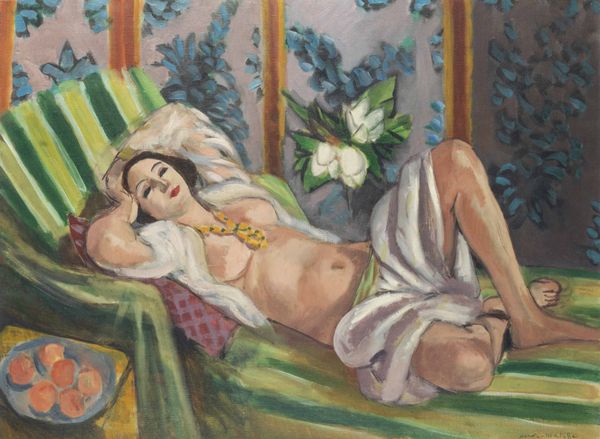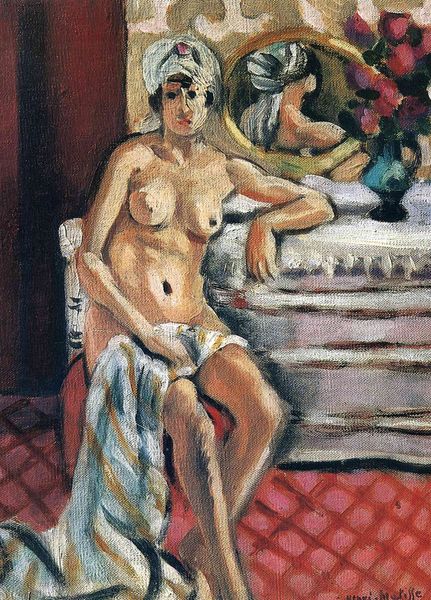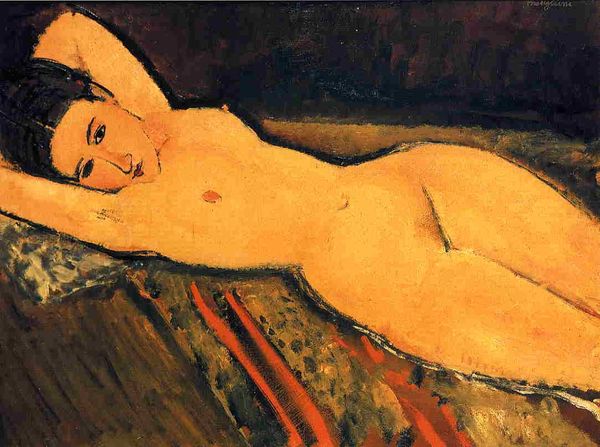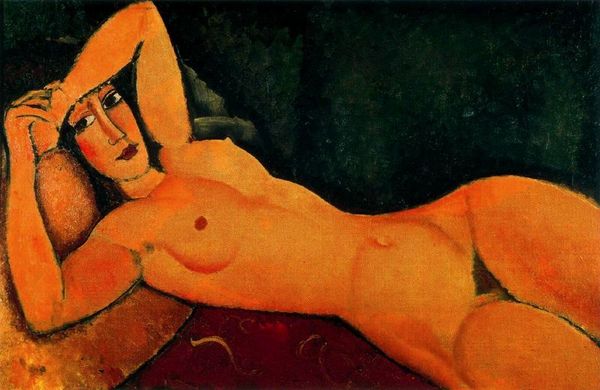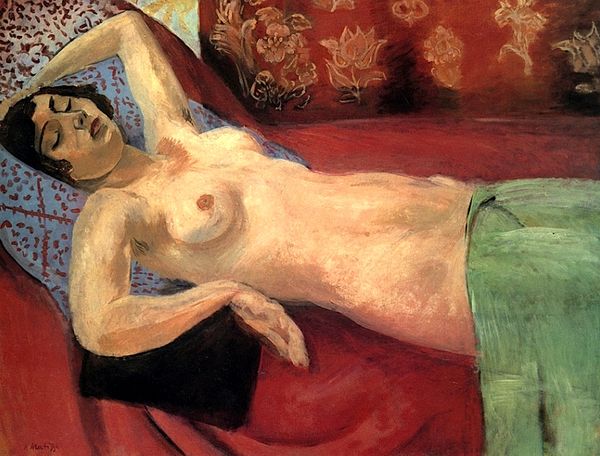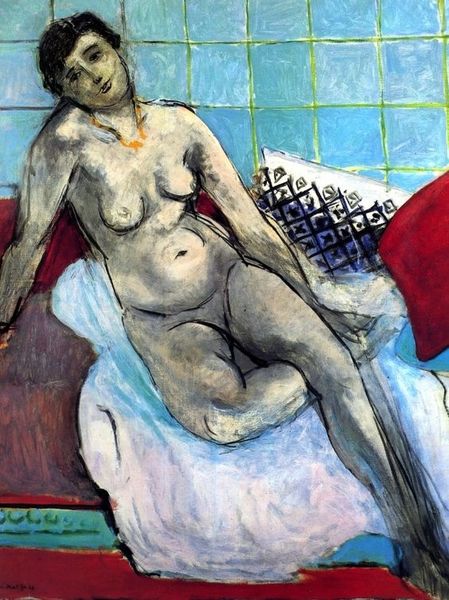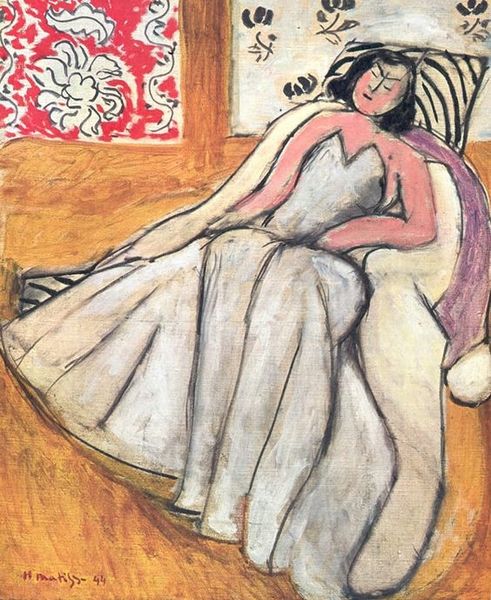
Copyright: Henri Matisse,Fair Use
Editor: Here we have Matisse’s "Yellow Odalisque" from 1926, created using oil paint. I’m struck by the almost tactile quality of the paint, especially in the rendering of the fabric and the figure's skin. What stands out to you in this work? Curator: Looking at "Yellow Odalisque," I'm particularly interested in how Matisse uses readily available materials like oil paint to challenge traditional artistic conventions. Notice the tension he creates between the flat, decorative background and the three-dimensional modeling of the figure. He's calling attention to the very act of painting, to the materiality of the medium. Consider the canvas itself – a manufactured product, then the pigment – ground and mixed, potentially by workshop hands. Editor: So you’re saying it’s not just about the image itself, but how that image was brought into being? Curator: Exactly. The "Odalisque" genre has a long history rooted in exoticism and often exploitation. Matisse’s use of vibrant colors, the simplified forms, the evident brushstrokes…all these highlight the production. He prompts us to consider the socio-economic context of both the model and the making. Where were those patterned fabrics produced? By whom? And under what conditions? Editor: That's fascinating! I hadn’t considered the labor involved in creating all the elements within the painting, not just the painting itself. It really makes you think about the consumerism of the art world. Curator: Precisely. It’s about pushing us to look beyond the aesthetic surface and question the means of production and circulation that underpin even seemingly simple depictions. Editor: Thanks. This made me think differently about art's power beyond just what's on the surface, and consider labor's impact in the material choices of art.
Comments
No comments
Be the first to comment and join the conversation on the ultimate creative platform.

